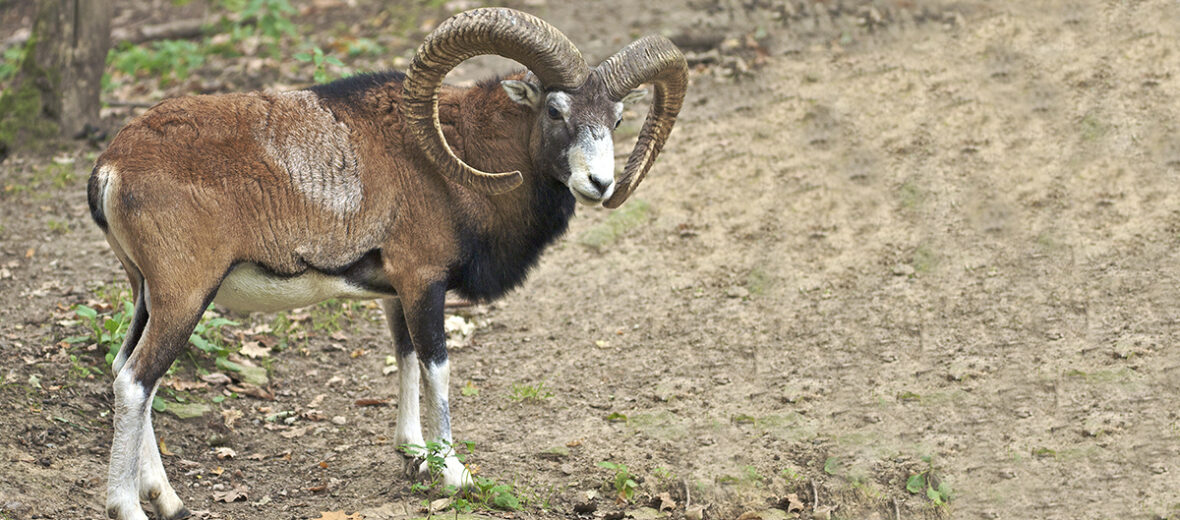
The mouflon, aka urial, is believed to be the ancestor of all modern domestic sheep. They hail from the Middle East from places like Iran, Armenia, Azerbaijan, Turkey, and more. They prefer open rough terrain at mid to high elevations. These critters inhabit rocky hill countrysides, alpine meadows, lowland to highland shrubland habitats, rocky semi-deserts, grass-covered slopes, and even agricultural regions. Due to habitat loss at the hands of residential and commercial developments, logging, and agriculture; hunting; trapping; war; civil unrest; invasive species (and with them disease and competition for food & territory); and climate change (which causes severe droughts and extreme temperatures), these creatures are listed as Vulnerable by the IUCN.
First the Stats…
Scientific name: Ovis orientalis
Weight: Up to 120 lbs.
Length: Up to 5 feet
Height: Up to 4 feet, at the shoulders
Lifespan: Up to 16 years
Now on to the Facts!
1.) The last tally of their overall numbers was in 2020 and that survey had them at 18,000 wild individuals. Those numbers are decreasing.
2.) Unfortunately, their large, sickle shape horns are sought after by big game hunters. Females also have horns, but are much smaller.
3.) A group of urials is called a drift, drove, mob, flock, herd, fold, or trip.
4.) Herds are separated into males only and females only. These herds come together only to breed.
5.) Battles for breeding rights rarely end up in injury.
But wait, there’s more on the mouflon!
6.) After a battle, aka rutt, the dominant male will expose his neck to be licked by the losing male. This is called an appeasement ceremony.
7.) Mouflons are diurnal (active during the day).
Did you know…?
Urials can run up to 31 mph.
8.) These critters are herbivores (eat plant matter) that graze on a variety of grasses.
9.) They are polygynous (1 male mates with multiple females).
10.) Females undergo up to a 5 month gestation (pregnancy) that yields up to 2 lambs.
But wait, there’s still more on the mouflon!
11.) Lambs, aka lambkins, are born predominantly precocial (self sufficient). They can stand soon after birth and not long after they can also run.
12.) Contagious livestock diseases can often infect the wild populations of mouflons. Diseases such as query fever, ecthyma, listeriosis, foot rot, and more can infest whole herds.
Did you know…?
These creatures are nomadic and shy, & don’t stay in 1 place for very long.
13.) Mouflons have large scent glands beneath their eyes that are used to denote territory and also stain their fur.
14.) The male’s horns continue to grow their whole life and are utilized to denote dominance.
15.) Like cows, urials will regurgitate their food to eat again. This aids in digestion of the tough to eat grasses they ingest.
16.) Wolves, foxes, lynx, and large raptors all prey on these animals.
Now a Short Mouflon Video!
Be sure to share & comment below! Also, check out the Critter Science YouTube channel. Videos added regularly!
Want to suggest a critter for me to write about? Let me know here.
Some source material acquired from: Wikipedia & IUCN
Photo credit: Jörg Hempel



